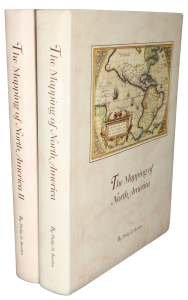Rare Maps and Prints
- World & Celestial
- North America
- West Indies, South & Central America
- British Isles
- British Isles
- English counties
- Large-scale
- Bedfordshire
- Berkshire
- Buckinghamshire
- Cambridgeshire
- Cheshire
- Cornwall
- Cumberland
- Derbyshire
- Devon
- Dorset
- Durham
- Essex
- Gloucestershire
- Hampshire
- Herefordshire
- Hertfordshire
- Huntingdonshire
- Islands
- Kent
- Lancashire
- Leicestershire
- Lincolnshire
- Middlesex
- Norfolk
- Northamptonshire
- Northumberland
- Nottinghamshire
- Oxfordshire
- Rutland
- Shropshire
- Somerset
- Staffordshire
- Suffolk
- Surrey
- Sussex
- Warwickshire
- Westmoreland
- Wiltshire
- Worcestershire
- Yorkshire
- Wales
- Scotland
- Ireland
- Western Europe
- Eastern Europe
- Middle East
- Africa
- Asia
- Australasia & Pacific
- Decorative Prints
- Title Pages
Mr. Philip D. Burden
P.O. Box 863,
Chalfont St. Giles, Bucks HP6 9HD,
UNITED KINGDOM
Tel: +44 (0) 1494 76 33 13
Email: enquiries@caburden.com
William Tunnicliff (fl.1784-96) was a land surveyor and cartographer. In 1786 he began publishing a series of ‘Topographical Surveys’ of individual counties. In that year he was also advertising for employment and it seems that the series was a stop gap to further employment. Those of Staffordshire, Cheshire and Lancashire were all issued with maps dated 1786 and bearing ‘Price 7 Shills.’ in the title. These three were then brought together under one title in 1787. Clearly successful he decided to expand the work with three further neighbouring counties, namely Worcestershire, Gloucestershire, and Somerset. The map for Worcestershire is dated 1788. The six appeared as ‘A Topographical Survey of the Counties of …’ in 1789, offered here. The two groups of three counties have their own contiguous pagination.
The work was effectively a cross between a road book and commercial directory. Each county contains a description of all the main roads with an index, a list of subscribers, followed by a fascinating directory of the ‘Principal Merchants and Manufacturers’ for each town. Each town also identifies market days, fairs and principal inns. The work was supported by subscription and encouraged by the plates of coat of arms. Numerous blank ones remain possibly to encourage further contributions. A large amount of industrial information is included including a focus on canals, a feature which was dramatically changing the landscape at the time. This was a time that the industrial revolution was rapidly changing the country.
The first three counties issued each contain slightly smaller folding maps. Typical of them the Lancashire records the Manchester to Mersey canal and even the intended Liverpool to Leeds Canal. The map of Staffordshire records the Soho Manufacturing plant north west of Birmingham. It was an early factory to work on the principal of mass production on an assembly line principal. Founded in 1766 by Matthew Boulton it was the first to use a Watt steam engine in 1782. It would also be home to the first steam powered mint. The three ensuing counties, here bound first, are each accompanied with a much larger folding map. Certainly, larger than might be expected for a work this size. The resultant scale is likewise improved.
Provenance: early manuscript ownership inscription of ‘J. Tyndall’ on front free endpaper. Fordham (1924) p. 39; King (1988) no. 45; Needell (1995) no. 106; not in Saunders (2013); Smith (1989a); Whittaker (1942) nos. 260 & 266.
The work was effectively a cross between a road book and commercial directory. Each county contains a description of all the main roads with an index, a list of subscribers, followed by a fascinating directory of the ‘Principal Merchants and Manufacturers’ for each town. Each town also identifies market days, fairs and principal inns. The work was supported by subscription and encouraged by the plates of coat of arms. Numerous blank ones remain possibly to encourage further contributions. A large amount of industrial information is included including a focus on canals, a feature which was dramatically changing the landscape at the time. This was a time that the industrial revolution was rapidly changing the country.
The first three counties issued each contain slightly smaller folding maps. Typical of them the Lancashire records the Manchester to Mersey canal and even the intended Liverpool to Leeds Canal. The map of Staffordshire records the Soho Manufacturing plant north west of Birmingham. It was an early factory to work on the principal of mass production on an assembly line principal. Founded in 1766 by Matthew Boulton it was the first to use a Watt steam engine in 1782. It would also be home to the first steam powered mint. The three ensuing counties, here bound first, are each accompanied with a much larger folding map. Certainly, larger than might be expected for a work this size. The resultant scale is likewise improved.
Provenance: early manuscript ownership inscription of ‘J. Tyndall’ on front free endpaper. Fordham (1924) p. 39; King (1988) no. 45; Needell (1995) no. 106; not in Saunders (2013); Smith (1989a); Whittaker (1942) nos. 260 & 266.
TUNNICLIFF, William
A Topographical Survey of the Counties of Somerset, Gloucester, Worcester, Stafford, Chester, and Lancaster. Containing A new-engraved Map of each County, with a complete Description of the Great, Direct, and Cross Roads ...
Printed and sold by R. Cruttwell ..., Bath, 1789
Octavo (210 x 135 mm.), later half calf, marbled paper boards, spine with decorative gilt raised bands, each compartment with central gilt feature, blind embossed title. With typographic half title and full title, six parts bound in two sections, pp. (vi), (2), 34, (2), 35-64, 6, (2), 67-88; (2), 40; (2), 41-68, (2) , 69-118, with 6 folding maps and each with 8 plates of the Arms of the Nobility for each county, those of Lancashire not numbered correctly, one or two maps with binders tears, otherwise in good condition.
Stock number: 9836
SOLD








